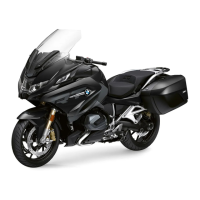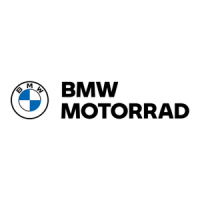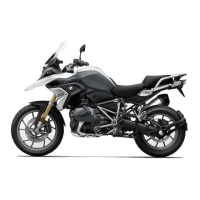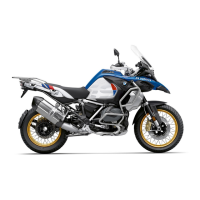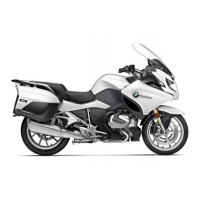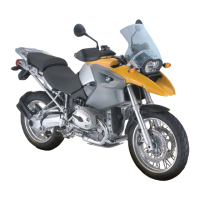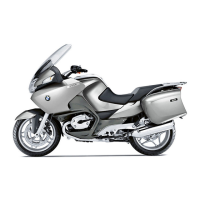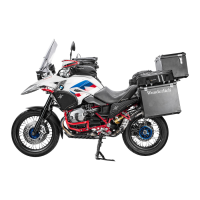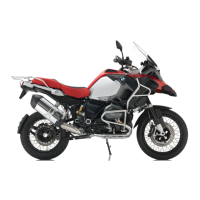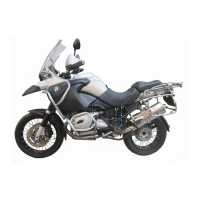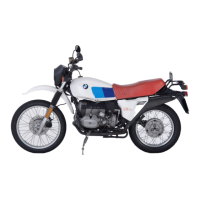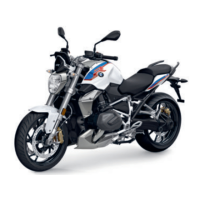
Do you have a question about the BMW Motorrad R 1250 R and is the answer not in the manual?
| Bore x Stroke | 102.5 mm x 76 mm |
|---|---|
| Compression Ratio | 12.5 : 1 |
| Length | 2, 165 mm |
| Dry Weight | 239 kg |
| Wet Weight | 243 kg |
| Final drive | Shaft drive |
| Engine Type | Air/liquid-cooled flat twin (boxer), 4-stroke, four valves per cylinder, double overhead camshafts |
| Displacement | 1254 cc |
| Maximum Power | 136 hp (100 kW) at 7, 750 rpm |
| Maximum Torque | 143 Nm at 6, 250 rpm |
| Transmission | 6-speed constant mesh |
| Clutch | Wet clutch with anti-hopping function, hydraulically operated |
| Front Suspension | Upside-down telescopic fork, 45 mm diameter |
| Rear Suspension | Cast aluminum dual swing arm, BMW Motorrad Paralever |
| Front Brake | Dual 320 mm discs, 4-piston calipers |
| Rear Brake | Single 276 mm disc, 2-piston caliper |
| Seat Height | 820 mm |
| Fuel Capacity | 18 l |
| Engine | Air/liquid-cooled flat twin (boxer), 4-stroke, four valves per cylinder, double overhead camshafts |
| Maximum speed | 200 km/h |
| Gearbox | 6-speed constant mesh |
Details on the eCall system, its principle, legal basis, and operation.
Detailed labeling and function of the controls on the left handlebar switchgear.
Detailed labeling and function of the controls on the right handlebar switchgear.
Explanation of various indicator and warning lights on the motorcycle's dashboard.
Explanation of warning indicator symbols, their colors, and meanings.
Procedure for operating the ignition switch, steering lock, and key management.
Instructions for operating the ignition and steering lock using the Keyless Ride system.
Function and operation of the emergency-off switch for quick engine shutdown.
Details on initiating emergency calls via BMW or public emergency numbers.
Details on Dynamic ESA settings, damping modes, and load settings for suspension adjustment.
Details on setting up and customizing PRO riding modes for enhanced performance.
Instructions for switching on, setting, accelerating, decelerating, and deactivating cruise control.
Details on activating, deactivating, and customizing the anti-theft alarm system.
Instructions for using the navigation system, entering destinations, and setting route criteria.
Guidance on adjusting rear suspension spring preload based on load conditions.
Essential safety advice including rider's equipment and proper loading procedures.
Checklist for regular motorcycle inspection to ensure safe operation.
Step-by-step guide for starting the motorcycle engine, including pre-ride checks and conditions.
Instructions on manual gear shifting and the operation of the Gear Shift Assistant Pro.
Information on brake operation, emergency braking, and safety considerations for wet or dirty conditions.
Instructions on fuel grade, usable fuel capacity, reserve fuel, and safe refuelling procedures.
Explanation of how ABS works, its design baseline, and the effects of surface irregularities.
Description of how traction control (ASC/DTC) works, including bank angle and special situations.
Explanation of the MSR system's purpose, causes of excessive slip, and its effect in different riding modes.
Details on the Dynamic ESA system, its riding position equalizer, and possible settings.
Explanation of how to select riding modes (RAIN, ROAD, DYNAMIC, DYNAMIC PRO) for different conditions.
How Dynamic Brake Control works, its behavior in emergency braking, and accidental throttle actuation.
Details on the Pro shift assistant system, its advantages, and how it works with rider input.
Explanation of the Hill Start Control function, its effect on inclines, and behavior during drive-off.
Guidance on checking brake function, pad thickness, and fluid levels for front and rear brakes.
Information on checking tyre pressure and tread depth, including warnings for incorrect pressure.
Safety precautions and procedures for jump-starting the motorcycle.
Instructions for securing, installing, and operating the BMW Motorrad navigation system.
Guide to diagnosing and rectifying common issues like engine not starting or Bluetooth connection problems.
Specifications for engine oil capacity, viscosity, and topping up procedures.
Technical specifications of the engine, including type, displacement, bore, stroke, and compression ratio.
Specifications for front and rear brake systems, including pad material.
Instructions for reporting safety defects to NHTSA and Transport Canada.
Schedule outlining recommended maintenance tasks based on mileage and time intervals.
